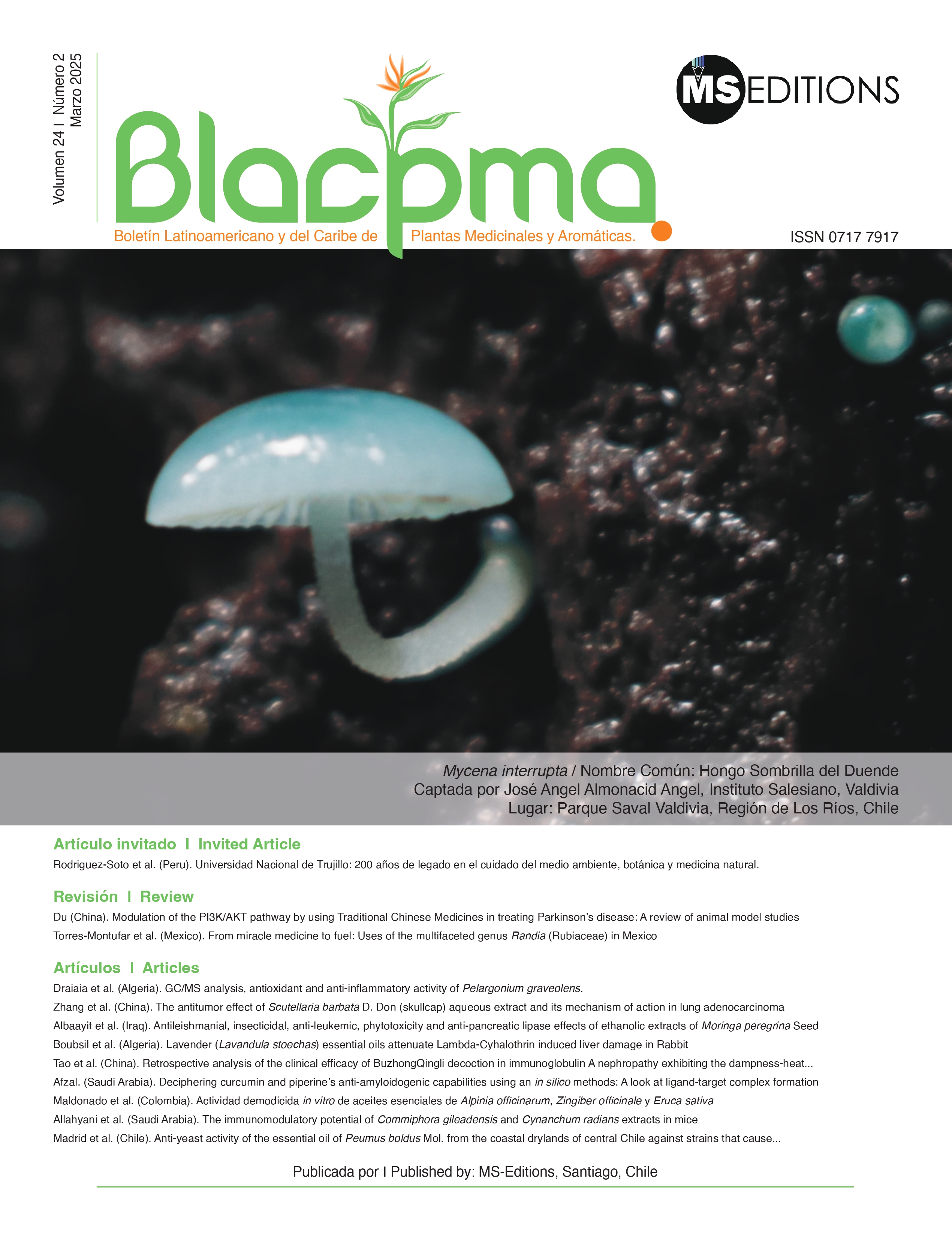Deciphering curcumin and piperine's anti-amyloidogenic capabilities using an in silico method: A look at ligand-target complex formation
DOI:
https://doi.org/10.37360/blacpma.25.24.2.19Keywords:
Curcumin; Piperine, Anti-amyloidogenic, Molecular docking, In-silicoAbstract
Amyloid-β (Aβ) peptides play pivotal role in the pathogenesis of Alzheimer Disease (AD) and exert toxic effects on neurons. Current treatment options available to AD patients, such as AChE inhibitors, only provide symptomatic relief. Dietary phytochemicals are currently being used as adjuvant therapy to expedite their therapeutic efficacy. This study was designed to investigate potential bioactive compounds of curcumin and piperine as anti-amyloidogenic agents. Molecular docking was applied to conduct screening process in silico to predict the most probable conformation of curcumin and piperine ligand when they bind to Aβ42 peptide. Molecular docking screening showed that curcumin and piperine could bind to Aβ42 peptide with different binding affinities. Curcumin possessed binding affinity to Aβ42 peptide with binding energy of -5.6 kcal/mol while piperine had binding energy of -5.4 kcal/mol. Considering binding affinities, intermolecular interactions with amino acids, hydrogen bonding and hydrophobicity, curcumin emerged as potential lead compound to treat AD.
Downloads
Downloads
Published
How to Cite
Issue
Section
License

This work is licensed under a Creative Commons Attribution-NonCommercial-NoDerivatives 4.0 International License.

